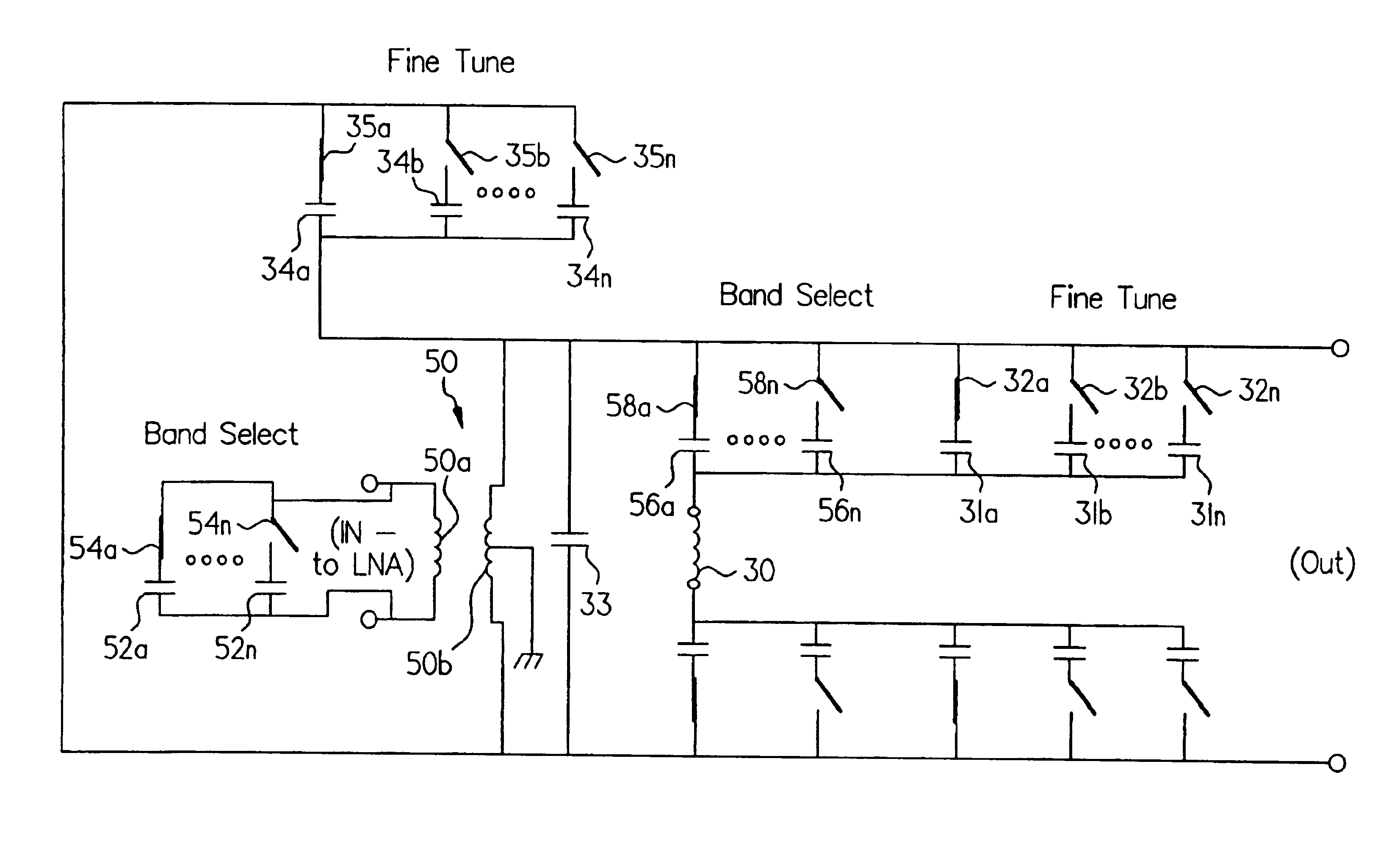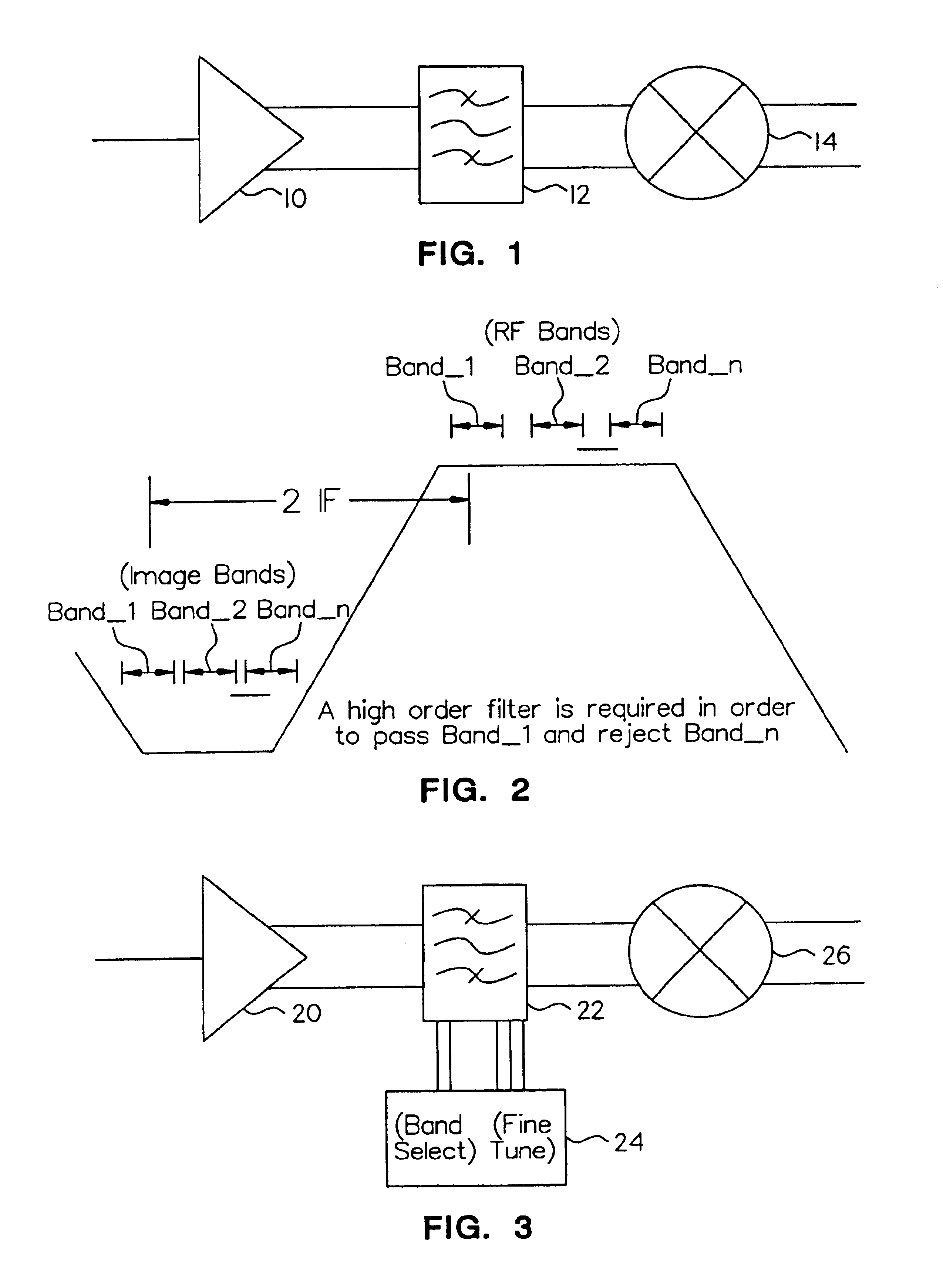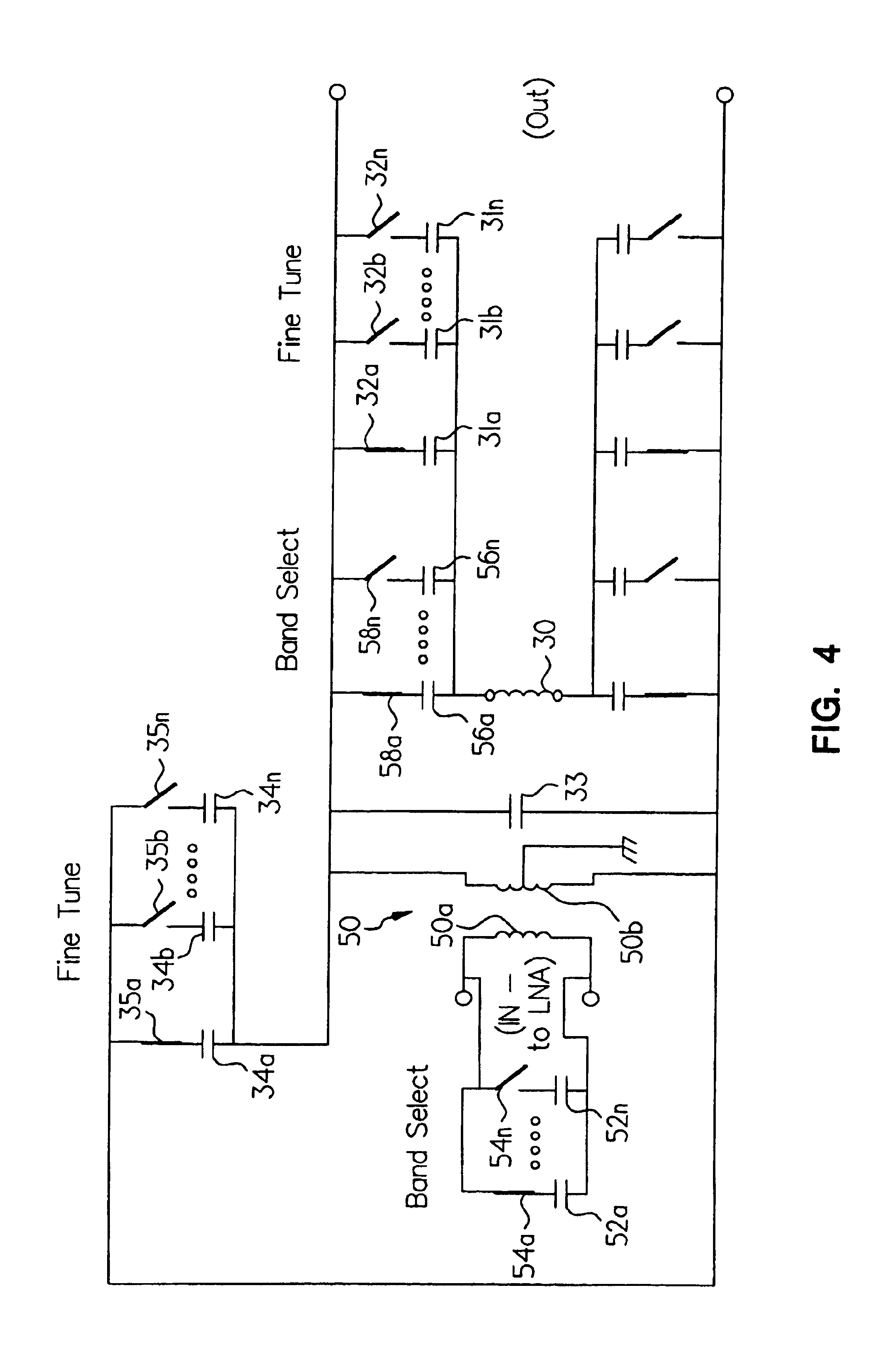Image trap filter
a filter and image technology, applied in the field of frequency conversion mixers, can solve the problems of image rejection and monolithic integration, large and expensive ceramic or surface, excessive size, weight, cost,
- Summary
- Abstract
- Description
- Claims
- Application Information
AI Technical Summary
Benefits of technology
Problems solved by technology
Method used
Image
Examples
Embodiment Construction
FIG. 3 is a schematic drawing of a portion of a radio frequency receiver that incorporates an image trap filter constructed in accordance with the present invention. In FIG. 3, a radio frequency signal is received by a low noise amplifier 20 and, after amplification, is supplied to an image trap filter 22 constructed in accordance with the present invention. Image trap filter is tunable by means represented by block 24 to select a band when incorporated in a multi-band radio frequency receiver and to filter the image signal from the amplified radio frequency signal. The radio frequency signal then is supplied to a mixer 26 that develops the intermediate frequency signal from the radio frequency signal.
Referring to FIG. 4, an image trap filter for filtering an image signal from a radio frequency signal, constructed in accordance with a first embodiment of the present invention and arranged for low-side injection of the local oscillator frequency, includes a first branch having an ind...
PUM
 Login to View More
Login to View More Abstract
Description
Claims
Application Information
 Login to View More
Login to View More - R&D
- Intellectual Property
- Life Sciences
- Materials
- Tech Scout
- Unparalleled Data Quality
- Higher Quality Content
- 60% Fewer Hallucinations
Browse by: Latest US Patents, China's latest patents, Technical Efficacy Thesaurus, Application Domain, Technology Topic, Popular Technical Reports.
© 2025 PatSnap. All rights reserved.Legal|Privacy policy|Modern Slavery Act Transparency Statement|Sitemap|About US| Contact US: help@patsnap.com



